In the early hours of Wednesday, India launched Operation Sindoor in response to the devastating terrorist attack in Pahalgam, Jammu and Kashmir, which occurred a fortnight earlier. The operation targeted nine terror sites across Pakistan and Pakistan-occupied Kashmir, including Bahawalpur, a known stronghold of the Jaish-e-Mohammed.
Pakistan has closed its airspace for 48 hours, and the situation along the India-Pakistan border remains tense. Meanwhile, the news came that Indian Air Defence shot down Pakistan’s F-16 near the LoC. As such, a comparison between the airpower of both nations becomes increasingly relevant.
A Pakistani-American, an Austin-based entrepreneur cum defence analyst, wrote an article in praise of the Pakistan Air Force (PAF). He said that the PAF was on track to become the third most powerful air force in Asia. Luckily he does not say it already is. He has put his arguments across nine attributes of modern air power. Despite not being a very large air force, he believes that PAF is highly sophisticated, internally integrated, strategically autonomous, rapidly modernising, tremendously well-trained and war-ready. As per his logic, it is better than the air forces of India, Japan, Israel, Turkey, Saudi Arabia, and others in Asia, and third only to China and Russia. Being a Pakistani, a very significant pro-Pakistan bias was expected. There is thus a need to look at independent rankings and specific assessments of the attributes.
Global Air Powers Ranking (2025)
The World Directory of Modern Military Aircraft (WDMMA) comes out with an annual air power ranking assessment. They take a comprehensive look at the current strengths (and inherent weaknesses) of modern military air arms across the globe. Currently, 103 countries and their 129 air arms are tracked. The criteria used include overall strength, modernisation status, logistics support, attack and defence capabilities, special and airborne forces, local aero-industry, force experience and exposure, among others.
Their 2025 global air power rankings put the US Air Force, US Navy, Russian Air Force, US Army, US Marines, Indian Air Force (IAF), China’s PLA Air Force (PLAAF), Japanese Air Force, Israeli Air Force, French Air Force, the UK’s Royal Air Force, South Korean Air Force, Italian Air Force, Royal Australian Air Force, PLA Navy Air Arm, Brazilian Air Force, Saudi Air Force and only then the Pakistan Air Force (PAF).
That means 18th position globally. As per this assessment, the IAF’s air power index is 69.4, and PAF’s is 46.3. Interestingly, it rates the PLAAF, which otherwise has a much larger air force, at index 63.9, mainly due to low training and war experience and also perhaps for being under constant Communist Party watch and with questionable morale. The Turkish Air Force is ranked further below at 21st position. Indian Navy Aviation is at the 27th and Indian Army Aviation at the 36th position. The Pakistan Army and Naval Aviation do not even feature in the list. Even if one was to presume a few aberrations somewhere, the list seems reasonably accurate.
Global Combat Aircraft Fleets 2025
As per Global Firepower 2025, the United States boasts unparalleled air strength, surpassing the combined aerial capabilities of Russia, China, India, South Korea, and Japan, owing to nearly 40 per cent of global military spending. Russia ranks second, having about one-third of America’s air capacity, and is followed by China, holding the third position in air power globally, rapidly advancing its capabilities through significant investments in technology.
Military aircraft fleet numbers comparison: the US (13,043), Russia (4,292), China (3,309), India (2,229), South Korea (1,592), Japan (1,443), Pakistan (1,399), Egypt (1,093), Turkey (1,083), and France (976). The figures for the Largest Air Forces in the World 2025 with the World Population Review are somewhat similar with minor variations in numbers and positions. Statista places IAF at 4th position and PAF at 7th position by numbers. IAF has 135,000 active personnel, compared to PAF’s 70,000.
Fighter Aircraft
Let us analyse PAF fighter aircraft based on Open Sources Intelligence (OSINT). Pakistan has approximately 450 fighter aircraft. PAF began inducting the Chinese Chengdu J-10CE “Vigorous Dragon” multirole jets on 11 March 2022. 20 J-10CEs have been delivered; 16 more are on order. PAF has 156 Pakistan Aeronautical Complex (PAC) JF-17 “Thunder” China-designed multirole aircraft that began inducting in February 2010. Of these, there are 50 JF-17 A Block 1, 62 JF-17A Block 2, 26 JF-17B Block 2, and 23 JF-17 C Block 3. 27 more Block 3 are on order. All Block 1 and 2 JF-17s will be upgraded to Block 3 standard one day. They have 75 Lockheed Martin (earlier General Dynamics) F-16 Fighting Falcon multirole fighters that began inducting in January 1983. These are of different upgrade statuses. 31 are F-16AM Block 15 MLU, 23 are F-16BM Block 15 MLU, 15 are Block 15 ADF, 12 are F-16C Block 52+, and 6 are F-16D Block 52+. Even the Block 52+, at best, is inferior in standard to the Mirage-2000 upgrade.
The remaining 58 ageing Dassault Mirage III multiroles that are of 1968 vintage (three decades older than the MiG-21 Bison) are being replaced by the Chinese fighters. The same is true of 1970s vintage 78 Dassault Mirage 5 attack/reconnaissance fighters. They are being sustained by reducing maintenance by creating Christmas trees of many aircraft. Yes, some of them can carry the Iranian-Pakistani Raad cruise missile, a reverse-engineered version of China’s Silkworm anti-ship missile, and also the Chinese H4/H2 glide bombs. The world saw the performance and accuracy of these bombs in February 2019 when they hit a few kilometres from the actual target. PAF also has around 50 Chinese J-7 (license-built MiG-21). As Mirages retired, PAF will mostly be of Chinese origin. The quality of Chinese products is well known, and PAF was forced to insist on Russian engines for their Chinese fighters.
In turn, as per OSINT, the IAF is known to have 36 Dassault Rafale, 40 Tejas Mk1, 260 Su-30 MKI, 60 upgraded MiG-29, 47 upgraded Mirage-2000, 115 SEPECAT Jaguars strike aircraft including those with a maritime role, and 40 MiG 21 Bison. The clear edge in numbers and capability is visible.
Yes, PAF is talking to China about getting J-35 fifth-generation fighters. The deal is still to be signed. The earliest timelines could be the early 2030s. They are also working with Turkey on the still-under-development Turkish KAI KAAN, of which only one prototype has been built, and even Turkey will induct it in the early 2030s. While India is developing its own Advanced Medium Combat Aircraft (AMCA), interim options of a matured fifth-generation fighter are also being explored. There is also a proposal to join the multinational Global Combat Air Programme (GCAP) sixth-generation fighter program.
Currently IAF has 31 fighter squadrons vis-à-vis PAF’s 18 squadrons. Among the 4th+ generation aircraft are the Su-30MKI, Rafale, Mirage 2000 and MiG-29. Their little less equivalents with Pakistan are the F-16 and J-10CE. IAF has traditionally had a 3:1 edge over PAF, which is now down to around 1.6:1. IAF must quickly rebuild its 42 squadrons.
Aerial Weapons
The Rafale can carry the Scalp-EG cruise missile (550 km range) and the Meteor Air-to-Air Missile (AAM) (150-200 km range). The Su-30 MKI and upgraded MiG-29 and Mirage-2000 are potent assets. IAF has indigenous Astra AAM, with Mk I having a range of 110 kilometres and Mk II with a range of 160 km. The MkIII under development will have a range of 350 km. Pakistan had ordered around 500 AIM-120C-5 AMRAAM missiles (100 km range). The exact numbers received are reportedly much less. The PL-12 range is 70-100 kilometres. There are unconfirmed reports that the PAF has the Chinese export variant PL-15E AAM with a range of 145 km on J-10s and also JF-17 Block IIIs. Clearly Indian AAMs have a range advantage.
IAF has a huge inventory of air-launched cruise missiles (ALCM). BrahMos missiles have a range of 450-800 km. The Kh-35 ALCM has a range of 260 kilometres. India has the Spice 2000 glide bombs with an add-on kit for 450/900 kg warheads and a CEP of less than 3 metres. Typically, its range is around 60 kilometres. The “Crystal Maze 2” is a medium-range air-to-surface ballistic missile, developed by Israel and used by the IAF. It’s designed for precision strikes on high-value targets, including long-range radars and air defence systems, even in GPS-denied environments. The missile has a strike range exceeding 250 kilometres. Pakistan has the Maverick air-to-ground (AGM) missile with a range of 25 kilometres and a warhead of around 100 kg. The Ra’ad-II is a standoff and an air-launched cruise missile (ALCM) derived from the Hatf-VIII Ra’ad and has a range of 600 kilometres and carries a 450 kg warhead. The H-2 and H-4 are SOW (Stand-Off Weapon) precision-guided glide bombs with a range of around 60 km. Both sides also have some other air-launched weapons.
Airfields & Air Defences
IAF has a clear advantage in the number of airfields, including a large number of dual-use airfields. PAF has 19 flying stations, of which around 15 will be activated in case of operations. Indian airbases facing Pakistan itself outnumber nearly 2.5:1. India today has many more motorway landing strips and has already tested out Agile Combat Environment (ACE) concepts. Pakistan too has had highway landing strips for many years. IAF airfield infrastructure, parallel runways, and hardened shelters are now of global standards.
IAF has a large inventory of S-400, Barak MR-SAM, Akash, Spyder, S-125, OSA-8 and Igla ground-based AD systems. Compared with PAF’s, which have many fewer Spada-2000, Crotale, HQ-9 & HQ-16, and Anza MK-II, RBS 70 AD systems. The S-400 will force PAF combat aircraft to stay far away from the border.
Force Multipliers and Airborne Troops
PAF has 9 Saab 2000 Erieye AEW&C equipped with the Saab Erieye AEW&C system. In August 2012, during a terrorist attack on the PAF Base Minhas in Pakistan, a Saab 2000 Erieye airborne early warning and control (AEW&C) aircraft was destroyed beyond repair, and two others were damaged by shrapnel. The four Chinese ZDK-03 Shaanxi turboprop AEW&C have now been redesigned for EW, ESM, and ECM roles since 2024 after the removal of the AESA radar radome and AEW&C equipment due to compatibility issues and standardisation of PAF’s AEW&C platforms with additional Saab 2000 AEW&C aircraft. IAF operates 3 IL-76 based Israeli “Phalcon” AEW&C, of which class PAF has none. India also has 3 DRDO “Netra” AEW&C, which are much more modern than the Saab-2000. India is working on more indigenous AEW&C. IAF also has two aerostats that see deep into Pakistan.
PAF operates 4 Russian Il-78 Ilyushin cargo-cum-aerial refuelling aircraft vis-à-vis IAF’s 6. For the continental size and overall threat perception IAF requires many force multipliers, for which work is in progress. The two sides can be considered at par currently. PAF is negotiating for Chinese KJ-500 turbo-prop AEW&C based on the Chinese Y-9 platform.
India has a clear advantage in the number of airborne troops. India has 12 C-130 J-40 Special Forces penetration aircraft. India also has a much larger fleet of transport aircraft and helicopters.
ELINT and EW Aircraft
India has 10 dedicated ELINT/reconnaissance aircraft and a significant fleet of UAV-based ISR fleet. PAF has three Dassault Falcon DA-20 and one Bombardier Global 6000 EW aircraft. Adding the four Shaanxi aircraft, they have a total of eight. IAF has no dedicated EW platform as of date. All IAF fighters have EW self-protection and jammers. PAF has an edge in dedicated EW aircraft. PAF’s edge in unencrypted Radio and R/T jamming facilities has since been neutralised by better Indian systems.
Network-Centric Warfare, Space and Cyber Domains
While the PAF has had its own Link-17 datalink for some time, the IAF now has its own indigenously developed data-link and Software Defined Radio (SDR). These are combined with a very advanced Integrated Air Command & Control System (IACCS) for air defence operations. IACCS uses secure AFNET to link all the airborne sensors and ground radars and share meaningful data with the different command & control nodes. India also uses its own satellites for encrypted radio signals. India is a leading space power and also has very significant cyber capability. Pakistan is totally China-dependent on both these counts.
Unmanned Systems
Pakistan has a substantial fleet of Chinese, Turkish and home-grown UAVs. Close to 80 HALE/MALE platforms, including around two dozen UCAVs. India has a large fleet of HALE/MALE and much larger numbers of surveillance and attack drones. India has a large inventory of loitering munitions, including Harop and Harpy classes. India’s private sector is huge in drone manufacturing now. Conflict in Ukraine and in West Asia has shown that HALE/MALE could be sitting ducks in a contested environment. Clearly, sides with larger numbers of loitering munitions will have the edge. These may be required in hundreds of thousands. The side with a better economy will be able to sustain such production or purchases.
Exercise and Combat Exposure
IAF is high on pilot training. IAF has had one of the best exercise exposures, with over 20 multilateral air exercises in the last two years. Despite superior F-86 Sabres and the F-104s in the 1965 and 1971 wars, Indian Gnats and MiG-21s hammered the PAF in air combat. PAF is essentially a defensive force, whereas India goes deep inside to hit strategic and tactical targets. Notwithstanding the denial and the DG ISPR’s fake narrative IAF hit a major terrorist camp at Jaba Top near Balakot, and a MiG-21 Bison shot down a PAF F-16.
Comprehensive National Power (CNP)
The global CNP index depends on factors such as military capabilities, economic capabilities, economic relationships, future resources, cultural influence, diplomatic influence, resilience, and defence networks. The Lowy Institute’s Asia Power Index puts the US, China, India, Japan, Australia, and Russia as the top six in Asia in that order. Pakistan is at 16th position.
According to the IMF’s World Economic Outlook, India’s nominal Gross Domestic Product (GDP) is expected to surpass Japan in 2025, making India the fourth-largest economy globally. Specifically, India’s GDP is projected to be $4,187.017 billion. In 2025, Pakistan’s GDP is projected to be around $357.0 billion.
In 2024, Pakistan’s defence budget for 2024-25 was equivalent to $7 billion. India’s is $78.3 billion for 2025-26. India’s domestic defence production reached Rs 1,26,887 crore in 2023-24. India has set an ambitious annual defence production outlay of Rs 1.75 lakh crore for FY25, which is expected to grow at a CAGR of around 20 per cent to Rs 3 lakh crore (as per the Ministry of Defence) by FY29. Defence exports surged to Rs 23,622 crore (approx. US$ 2.76 billion) in the financial year 2024-25. The bulk of the exports were by the private sector. In 2023 Pakistan’s defence exports were $338,000. Pakistan faces critical shortages of artillery and has ammunition worth four days of war. They are highly dependent on China and Turkey for defence supplies. Unlike in the past, most Arab states, like Saudi Arabia and the UAE, are much closer to India. Amid simmering geopolitical tensions with Pakistan, global ratings agency Moody’s says India’s economy is unlikely to face major disruptions—even in the event of a sustained flare-up.
To Summarise
The real test and figures come out in actual wars. PAF’s track record in the 1965 and 1971 wars is well known. The famous Keelor brothers shot F-86 Sabres flying Folland Gnats in 1965, and Gnat became known as the “Sabre Slayer”. Pakistan had to send its aircraft to Iran and other countries during these wars lest they get shot up. The score in the air battle over Boyra on November 22, 1971, between IAF’s Gnats and PAF’s Sabre aircraft was two Sabres shot down and pilots captured and one Sabre badly damaged, against zero IAF loss. The IAF had complete air superiority over East Pakistan within two days of the 1971 war; the PAF were grounded, and their pilots had to be evacuated. In the Western Sector, IAF MiG-21 fighters shot down PAF F-104 Starfighters. Two kills were confirmed, and two other F-104s were critically damaged. The first supersonic air combat in the subcontinent occurred when an Indian MiG-21FL claimed a PAF F-104A with its GSh-23 cannon.
What IAF did to the Pakistani tanks in Longewala is already military folklore. That Sui gas plant and Karachi refinery were set aflame cannot be denied. That India could split the country into two is a fact of history. With 93,000 prisoners of war, it was the largest surrender after WWII.
The JF-17s sold to Myanmar are grounded with airframe cracks. Nigeria has burnt its fingers by buying three aircraft. In any case, all the sales are being coordinated by China through back channels. Bulk of the aircraft parts are still from China.
Pakistan is a country that is a fountainhead of global terrorism. Pakistan has had a hand in every major terror incident. It double-crossed the US by taking its funds and acting against it and also keeping Osama Bin Laden in an army cantonment for years. It deceived the US during their 20 years in Afghanistan by making sure the Americans failed. Pakistan is doing the same to “Iron Brother” China in Xinjiang. Today there are multiple secessionist movements in Pakistan, with Baloch, Sindhis, Pashtuns, and Baltis all rising against the Punjabi Musalman, who treats all others as lower beings.
Chanakya’s timeless doctrine says, “Before you crush the snake, ensure it has exhausted its venom.” Before the operation, Pakistan was being bled dry through diplomatic and other non-kinetic tactics like the suspension of the Indus Water Treaty. After the operation, the IAF stands tall and is fully prepared to repeat what it did in past wars and much more.
The writer is former Director General, Centre for Air Power Studies. Views expressed in the above piece are personal and solely those of the author. They do not necessarily reflect Firstpost’s views.


)
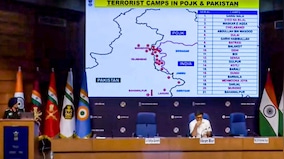)
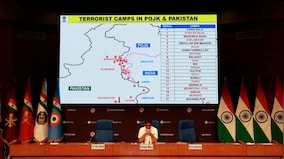)
)
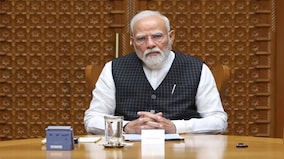)
)
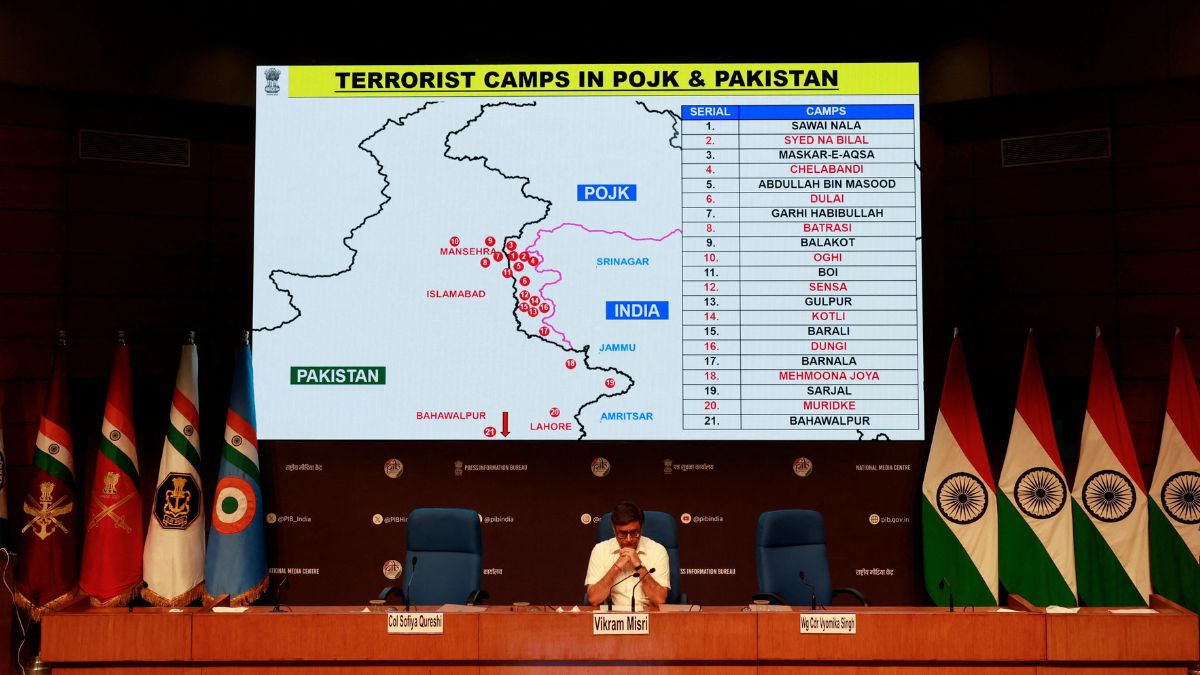)
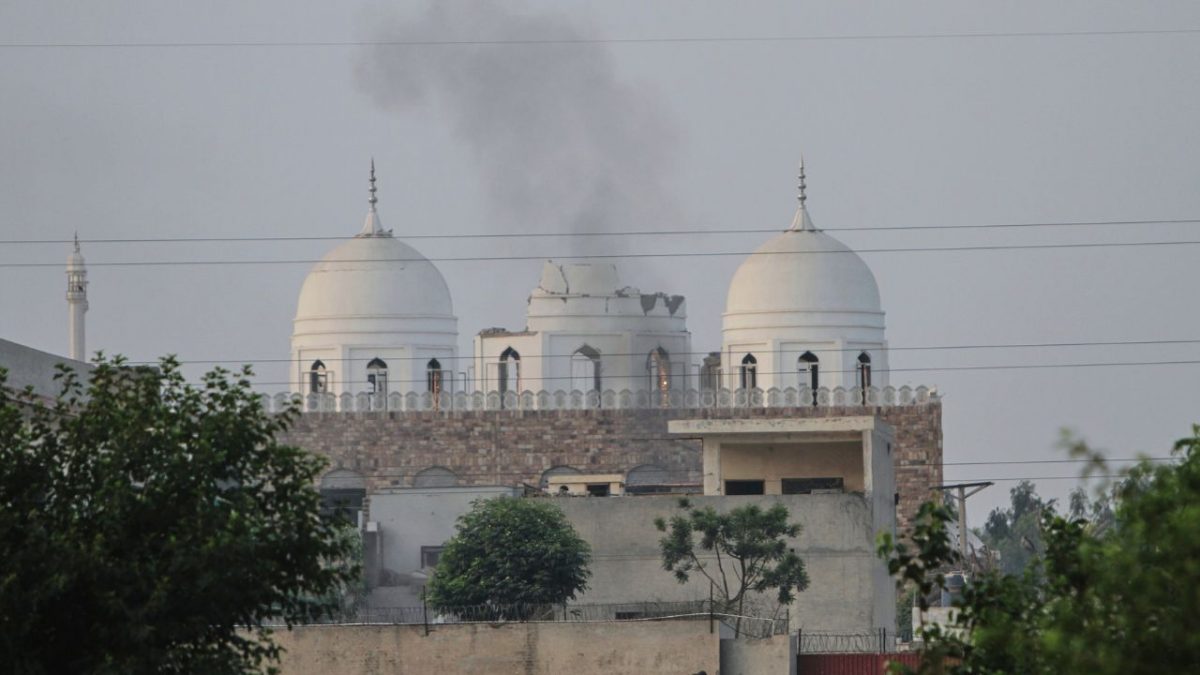)
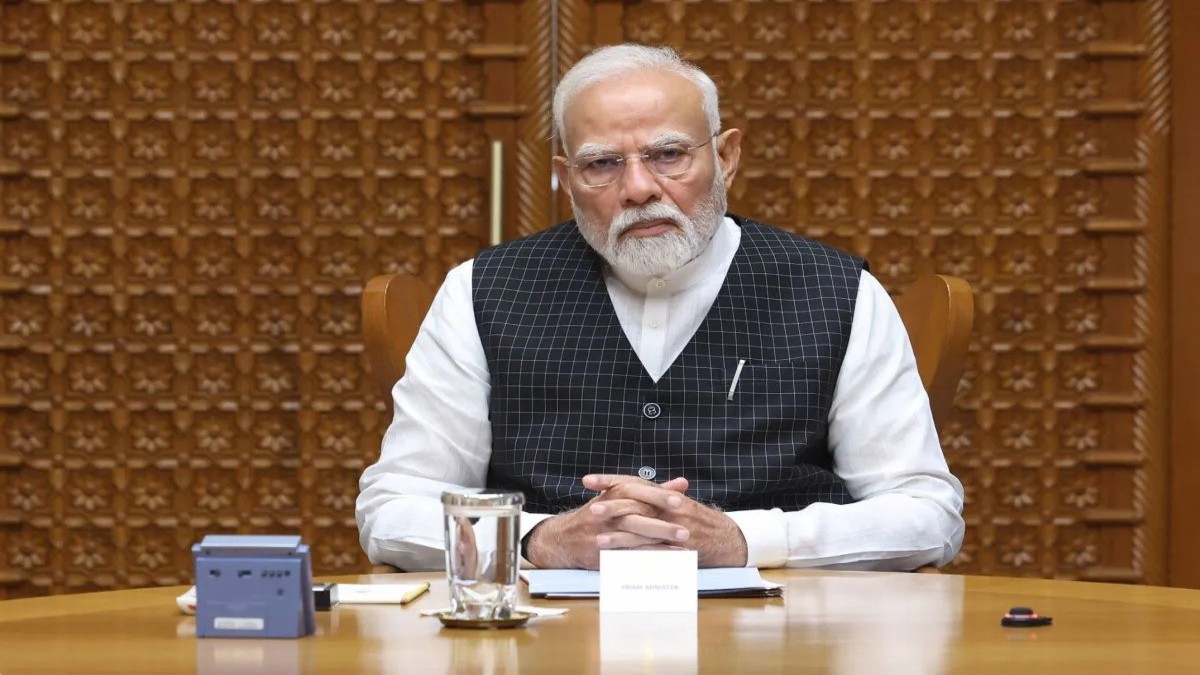)